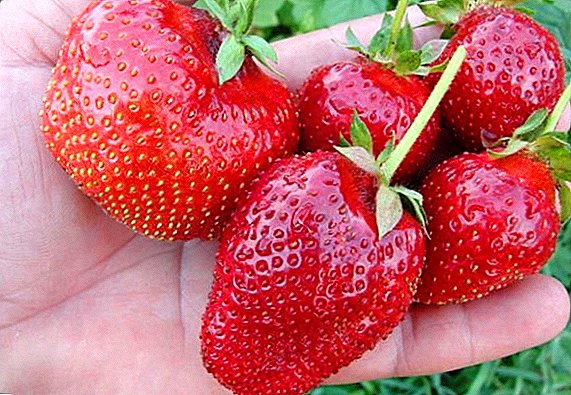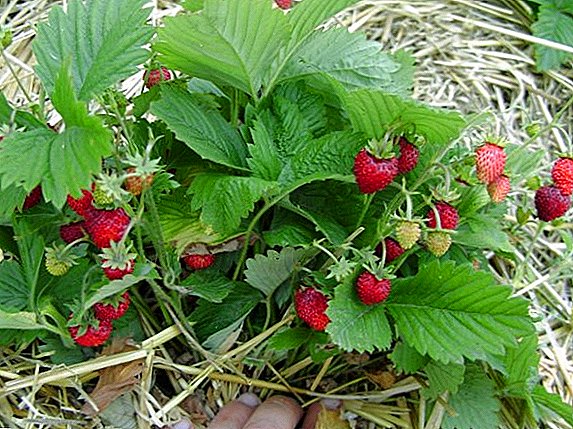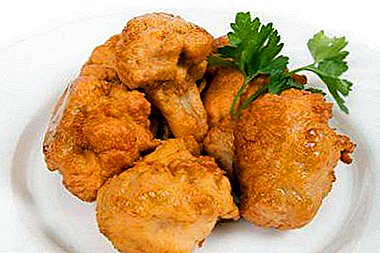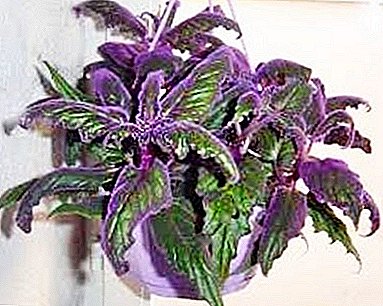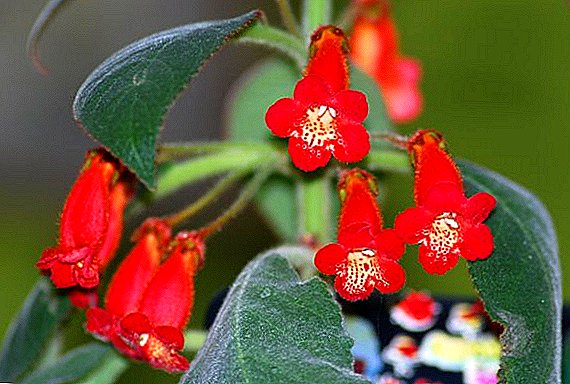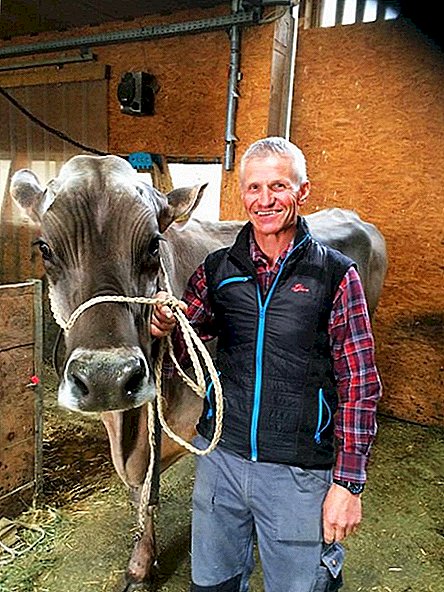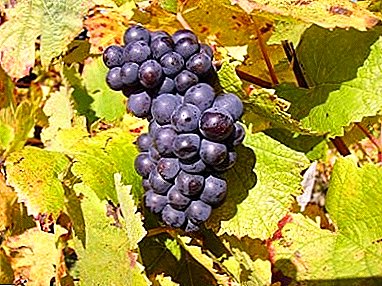
Even the one who has never been a fan of French wines has heard about the oldest French variety Pinot and its varieties.
The popularity and long-term reputation of this variety have earned the title of the best grape variety grown for the production of table wine.
There are more than one hundred varieties, which differ in the appearance of berries, ripening terms and taste. The main parent type of family is Pinot Noir.
Breeding history
 According to the DNA results, the alleged parents of the variety are grapes. Traminer and the closest variety Pinot Meunier. It got its name (Black Cone) because of the similarity of the shape of the bunch with the pine cone. A large number of species are based on Pinot Noir.
According to the DNA results, the alleged parents of the variety are grapes. Traminer and the closest variety Pinot Meunier. It got its name (Black Cone) because of the similarity of the shape of the bunch with the pine cone. A large number of species are based on Pinot Noir.
This is the oldest variety produced for many years only in Burgundy in the north of France. Now it is widespread everywhere. But to this day the best and most expensive wines are made only from its raw materials.
Among the French varieties we also have Malbec, Chardonnay and Merlot.
What kind is it?
It is used mainly for the production of wines, so it belongs to technical varieties. Frost resistance is very high, grapes with success tolerates winter temperatures down to -30 ° C.
Richelieu, Rusven and Rkatsiteli, Black Panther have the same frost resistance.
Maturity at Pinot Noir is medium, from 145 to 150 days. Full ripeness of berries comes in late September.
Pinot Noir Grapes: variety description
 This variety is easily recognizable by the appearance of the berries and leaves. Shriveled leaves, with characteristic cuts on the sides, bright green with a reddish tinge on the tips. The surface of the leaves has a soft felt edge. The berries are very dark blue, with a bluish bloom, almost black.
This variety is easily recognizable by the appearance of the berries and leaves. Shriveled leaves, with characteristic cuts on the sides, bright green with a reddish tinge on the tips. The surface of the leaves has a soft felt edge. The berries are very dark blue, with a bluish bloom, almost black.
Among the black varieties are known Moldova, Black Finger and Bull's Eye.
Clusters of a grade do not differ in the big sizes. The length of the brush varies from 7 to 12 cm, width is no more than 8 cm. The clusters themselves are very dense, the berries are strongly adjacent to each other. The weight of one bunch reaches the order. 120 grams. The comb at the hand is very strong, woody. About 4 cm long
Medium-sized berries have a mass of 13 g, 14-16 mm in diameter. The shape of the berries is oval, less often round, practically not deformed. The juice in the fruit does not have a pronounced color, the flesh itself is very tender, juicy, pleasant to the taste, has two or three seeds.
The variety is not very strong, the vine is fully mature by the time berry ripeness by 90%.
A photo
You can clearly see the grapes in the photo below:





Specifications
The period of the growing season variety is about 145-150 days. The yield is low, on average only 60 c / ha, but the maximum was fixed at 103 kg / ha. Fruitful shoots are not all, about 60-90% per bush.
Clusters have the peculiarity of a strong pea and lose weight in adverse weather conditions. The variety as a whole is very picky and whimsical. In this case, lucky lands of Burgundy, New Zealand and Northern California. It is there that the best yields and ease of cultivation are observed.
Capricious in cultivation are also Syrah, Rizamat and Shahin of Iran.
A rich variety of various shades of taste makes it unique. Raspberries, plums, strawberries, smoke, blueberries, ginger, coffee - not a complete list of those notes that can be caught in taste.
INTERESTING: From the place of cultivation depends a lot. In one region, the output will be excellent table wine, in the other a great base for champagne.
 Sugar content of berries is 24-25%at acidity of 9%. Of particular importance is the temperature of cultivation. The high temperature gives a large amount of tannins in the structure of the berry, and with a cool taste it is saturated with fruity notes.
Sugar content of berries is 24-25%at acidity of 9%. Of particular importance is the temperature of cultivation. The high temperature gives a large amount of tannins in the structure of the berry, and with a cool taste it is saturated with fruity notes.
High sugar content can also boast Aladdin, Delight White and King Ruby.
In terms of winter hardiness, the variety is sufficiently adapted to low temperatures. In this case, it will ripen completely in those regions where it is enough for warm days to ripen.
Aging with the highest quality is obtained on gentle slopes with a somewhat dry and slightly calcareous soil structure. Low relief and plain for varieties are contraindicated.
Too early appearance of buds in the spring often leads to the death of eyes. In this case, the shoots begin to mature from additional buds and the harvest comes to its original form the following year. Flowers are both male and female.
Care and landing
Productivity for this variety is far from the first place. The main criterion is the quality of the grown clusters. Therefore, no more than two or four brushes are left on the vine, the rest are cut to the ground. Trowel made a height of not more than 1.5 meters.
Since the bushes are not vigorous, they plant them, leaving a distance of about 80 cm between them, and no more than 1 meter in the aisle. Concerning on one hectare fits 11 thousand bushes. For the French, the quality of the intended wine comes first, and 80% of the clusters are simply removed.
In general, if you do not thin out the grapes, you can give a rich harvest. But this will significantly affect the quality of the future wine.
IMPORTANT: For the ripening of this variety requires a cool climate, so it is quite possible to grow even in Moscow.
Protection against diseases and pests
 Resistance to such diseaseslike oidium and mildew and also rot Pino is tall enough. He is also not at all afraid of such a parasite as a bunched moth.
Resistance to such diseaseslike oidium and mildew and also rot Pino is tall enough. He is also not at all afraid of such a parasite as a bunched moth.
But the variety is extremely unstable to phylloxera. Shrubs with their own roots are affected and invariably die from root damage for 6 years. To prevent this from happening, it is grafted onto bushes that are resistant to this pest.
To avoid chlorosis, to which he has a tendency, it is necessary to carry out operations on the green parts of the bush, reducing them or removing them completely, especially in a humid climate.
Varieties
Pinot fran
Grape variety with increased yield. Also known as Cap, Pinot Negro, black pinot. This variety was obtained during the amateur selection of Pinot Noir. The aim of the development was to obtain a variety with higher yields.
Fran differs from the original look in the autumn yellow-green color of the leaves, while the leaves of the main variety acquire a dark red tint in the autumn period.
It is also distinguished by the yield, which is somewhat higher than that of the parent variety, about 200 kg / ha in favorable climatic conditions.
The ripening period is reduced by 10-15 days.
Photo Pinot Franc ":

Pinot Gris
Is a mutated view of Pinot Noir. Pinot Gris is an abbreviated name from Pinot grigio. He first appeared in Austria brought by monks, which is why his name "Gray Monk" occurred.
It differs from Pinot Noir in red-pink color of berries with a gray bloom, and autumn leaf color. Wine obtained from it differs from the family of wines in a darker color. The rest of the characteristics are identical to the parent grade.
Photo "Pinot Gris":

Pinot blanc
Known as Pinot white, Steen, Weisburgunder, Pinot de la loire.
A variety that has basically Pinot Gris, as it is a very long-standing mutation. Distinctive features of a grade are the lowered content of acid and a minimum of aromatic properties. The berries are pale green, the bushes are medium thick.
Wine produced from it does not require long aging and is used by the young. The variety is the most popular in Germany for making wine.
Photo "Pinot Blanc":

Pinot Meunier
Is a cloned form Pinot Sepage. This variety has small black and blue berries and small clusters. Together with Noir is one of the three varieties allowed for the production of champagne.
But compared to other varieties, this form is considered "poor relative". The wine obtained from it is used relatively young, as with long-term storage loses its taste.
Photo "Pinot Meunier":

All members of the family are actively cultivated in the best vineyards of France. Germany, Austria, New Zealand, California, Russia and even China.
This popularity is due to the undoubted qualities of varieties, the best of its kind for production of white, red wine and champagne.


